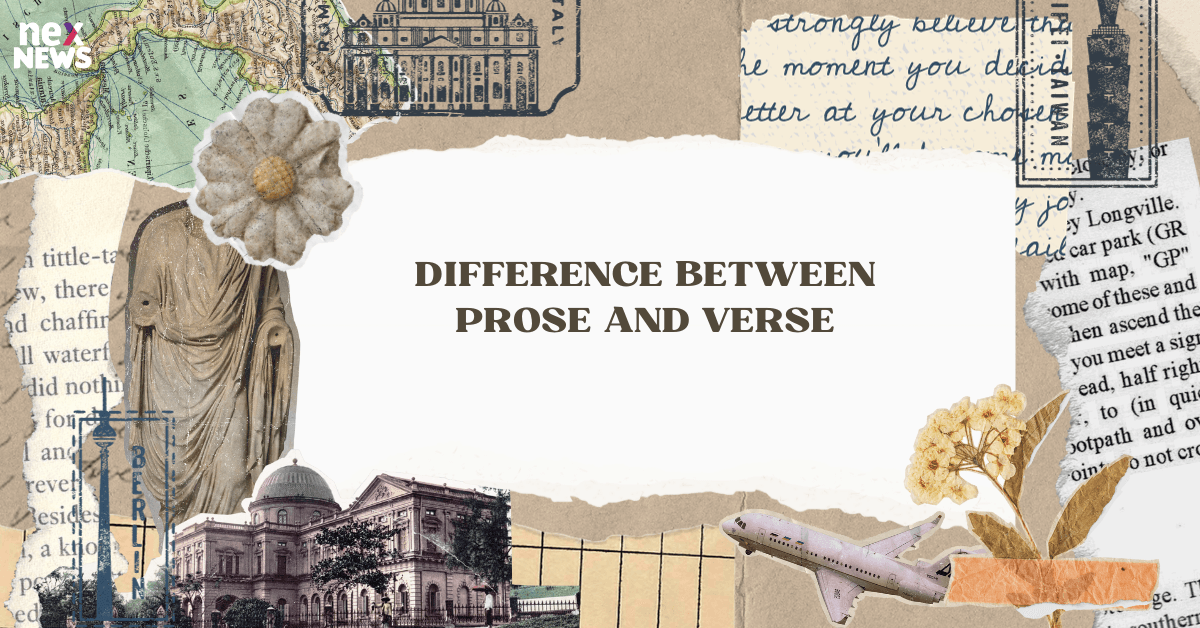Introduction
In the vast landscape of literature, two distinct forms stand out—prose and verse. Understanding the nuances between them is crucial for any aspiring writer or literature enthusiast. This article will delve into the definition, characteristics, and key differences between prose and verse, providing insights into their usage and impact.
Characteristics of Prose
Natural Flow
Prose is known for its natural flow of language, devoid of the rigid structures found in verse. It mirrors everyday speech, making it easily accessible to readers.
Lack of Formal Structure
Unlike verse, prose lacks a formal structure. It doesn't adhere to rhythmic patterns or specific line lengths, allowing for a more relaxed and spontaneous expression of ideas.
Common Use in Everyday Language
Prose dominates everyday communication, appearing in novels, essays, and speeches. Its informal nature makes it ideal for conveying information in a straightforward manner.
Characteristics of Verse
Rhythmic Patterns
Verse is characterized by rhythmic patterns, employing elements like meter and rhyme. This formal structure adds a musical quality to the language, enhancing its aesthetic appeal.
Formal Structure
Unlike prose, verse adheres to a formal structure. It often follows specific patterns, contributing to the artistic and structured nature of poetic expression.
Artistic Expression
Verse serves as a medium for artistic expression, allowing writers to convey complex emotions and ideas in a more stylized manner.
Key Differences
Structure and Form
The primary difference lies in the structure and form. Prose embraces a free-flowing, unstructured approach, while verse adheres to rhythmic patterns and formal structures.
Use in Literature
Prose is commonly used in novels, essays, and speeches, focusing on clarity and direct communication. In contrast, verse is reserved for artistic expression, manifesting in poetry, sonnets, and haikus.
Emotional Impact
While prose may excel in conveying information, verse holds a unique ability to evoke emotions through its rhythmic and structured form.
Examples of Prose
Novels
Novels, the epitome of prose, allow for intricate storytelling, character development, and the exploration of diverse themes in a straightforward manner.
Essays
Essays, often used for academic or persuasive purposes, rely on prose to present arguments and analysis coherently.
Speeches
Public speeches leverage prose for effective communication, ensuring that the speaker's message is clear and easily understood.
Examples of Verse
Poetry
Poetry, the quintessential form of verse, embraces rhythmic patterns, metaphors, and vivid imagery to convey emotions and ideas in a more artistic manner.
Sonnets
Sonnets, a classical form of verse, follow specific rhyme schemes and structures, showcasing the beauty of language in a compact form.
Haikus
Haikus, originating from Japanese poetry, demonstrate the concise and structured nature of verse through three lines and a specific syllable pattern.
When to Use Prose
Informal Settings
Prose finds its place in informal settings, providing a comfortable and accessible way to communicate ideas without the constraints of formal structures.
Narratives
When crafting narratives that require a straightforward and easily digestible format, prose proves to be the preferred choice.
When to Use Verse
Artistic Expression
When aiming for artistic expression, especially when emotions need to be conveyed with a poetic flair, choosing verse enhances the impact of the writing.
Emphasizing Emotions
Verse becomes the medium of choice when the writer seeks to emphasize emotions, utilizing rhythmic patterns and structured forms to heighten the impact.
Challenges in Writing Prose
Clarity
Maintaining clarity can be challenging in prose, as the absence of formal structures may lead to ambiguity. Writers must carefully structure sentences to convey their intended meaning.
Avoiding Monotony
In the absence of rhythmic patterns, prose writers face the challenge of avoiding monotony. Engaging the reader through varied sentence structures is essential.
Challenges in Writing Verse
Meter and Rhyme
Verse poses challenges in maintaining consistent meter and rhyme, requiring writers to balance creativity with adherence to formal structures.
Balancing Structure and Freedom
Writers in verse must navigate the delicate balance between adhering to formal structures and allowing for creative freedom, ensuring their expression remains both structured and authentic.
Conclusion
In the realm of literature, the difference between prose and verse is not just about structure but also about the art of expression. While prose excels in clarity and direct communication, verse adds a layer of artistry and emotional impact. Striking a balance between the two forms allows writers to explore the full spectrum of human expression.


POST A COMMENT (0)
All Comments (0)
Replies (0)